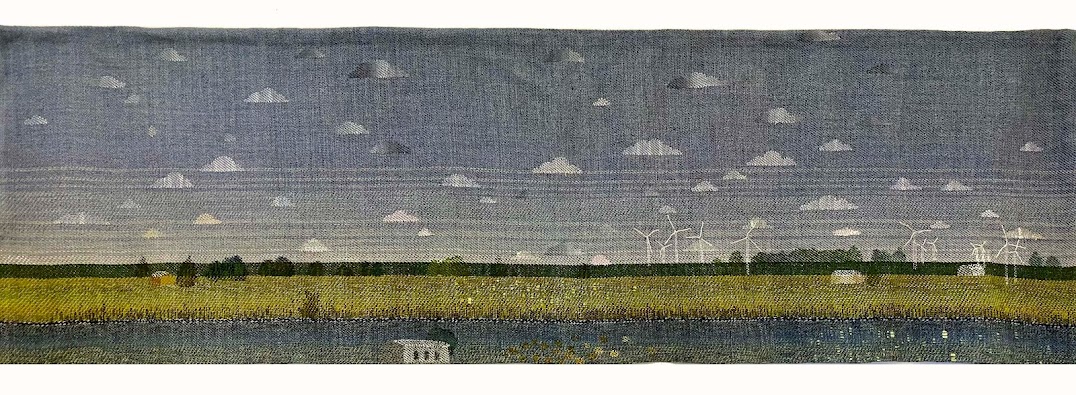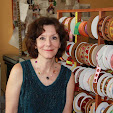I have been working wherever possible with linen in my adventures in screenprinting, loving its firmness, crispness, and the perfect, perfect neutrality of it raw flax grey color. (I painted the walls in my studio this color, as closely as I could match it). It looks particularly good printed with black ink when I am shouting my manifestos about managing the household, garden, and one's personal ecology. (I sell these in my etsy store, Greenhousetextiles)

Linen can be expensive, of course. Traditionally it had to be processed by hand. It comes from the flax plant, the dry stiff stems, and is known as a bast fiber as a result. It required a certain amount of wht we would call torture, were it applied to animals: retting (left in the fields after cutting, or soaking in a solution and then being left to rot until the hard bark rotted off), hackling or scutching (breaking its stiff limbs with a medieval looking machine), combing, before the usual spinning processes managed it from then on out.
I used to teach texile fiber properties to interior design students so I have these nifty pictures to show here:
 |
| Dew retted (from the fields) vs. water retted. |
The resulting fibers are long, smooth and incredibly strong. If you are reading this blog you may well be interested enough in textiles to understand linen's prized qualities of absorbency and coolness in hot weather. Nothing better than cool linen sheets on a hot summer night! You may also know that the finer it is woven, the silkier it gets with washing (think linen damask table napkins.
This lesson was inspired by an email I read this morning from the best source for reasonably priced linen I have yet found (www.fabrics-store.com), and despite my rather good understanding of linen's properties, I learned a lot!
So here I quote from today's email. If you want a good source for linen, this place is great! The linen comes from Russia, and the color palette and weight variety is enormous.
- The Durability Is Assured. Linen has an extremely high tensile strength that provides your projects with hardiness and longevity. In fact, it is known that Alexander the Great used layers of linen, called linothrax, as armor. Not to mention, linen is what was used to mummify due to its ability to last and preserve.
- Enjoy A Fabric That Grows Softer With Every Wash. Just because it is durable, doesn't make it coarse. Every time you put the IL019 linen in the washing machine, it will become softer to the touch.
- Unequalled Thermo-Regulation. Unlike cotton, linen is naturally insulating in the cold, and cool and breathable when it is warm. Additionally, linen whisks moisture from the skin -- that helps keep you less sweaty and more comfortable!
- Defense Against Dirt. Because of its strong tensile strength and natural process, linen has been dubbed one of the purest fabrics out there. This gives it the ability to resist stains, dirt, and even the growth of bacteria. In fact, hospitals use linen thread for internal procedures due to its natural sterility.
- Friend of the Environment? Linen production requires five times less pesticides and fertilizers than cotton. Our IL019 linen is made from the highest quality European Flax and comes from a mill and process that is 100% environmentally friendly. This is guaranteed by the internationally recognized Oeko-Tex certification..




Absolutely love embroidering on linen. Slow,cold Spring here too- leaves not out yet...
ReplyDeleteMy mother used to make linen as a child. I learned from her.
ReplyDeleteAbout all I've retained is, retting stinks. Literally, because you're rotting the stems. (She and siblings used to moosh them around barefoot in the rancid water, to free the fibers.)
But I still grow flax :) Always have, in every garden (PA, OR, IN, WA, IN, CO). And in IN, orioles used to come for the flax fibers on my compost pile very May :)